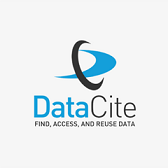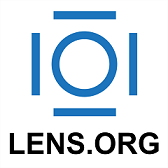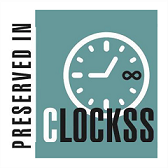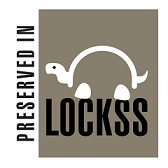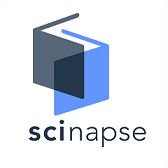Breaking Gender Stereotypes in Science Education: Empowering Girls in Uganda’s Upper Primary Schools
Abstract
Purpose: This study explored the factors influencing girls’ performance in Integrated Science in upper primary classes in two selected primary schools in Arua District, Uganda. It examined how girls perform in Integrated Science, the factors that shape their performance, and strategies to improve achievement in the subject. Methodology: A qualitative research approach with a case study design was employed. Thirty participants were involved, including two headteachers, four science teachers, and twenty-four girls from Primary Five and Six. Purposive sampling was used to select participants, with girls as the majority. Data were collected through interviews, focus group discussions, observation, and document analysis, and were analyzed analysed thematically. Findings: The study revealed that girls’ performance in Integrated Science was moderate. Facilitators included gender-responsive teaching pedagogies, guidance and counselling, supportive school environments, good syllabus coverage, the presence of role models, and positive teacher attitudes. Barriers included poverty, inadequate provision of basic needs, poor syllabus coverage, low parental education, reliance on traditional teaching methods, and lack of student commitment. Implications: The findings underscore the importance of strengthening gender-responsive pedagogies, enhancing guidance and counselling services, improving school infrastructure and learning resources, and fostering collaboration between schools and parents. Theoretically, the study affirms the relevance of gender-responsive education frameworks. Further research should extend to more schools and regions or adopt mixed and longitudinal designs to build a comprehensive understanding of gender disparities in science education.
Downloads
References
Abraha, M., Dagnew, A., & Seifu, A. (2019). Gender responsive pedagogy: Practices, challenges & Opportunities-A case of secondary schools of North Wollo Zone, Ethiopia. Journal of Education, Society and Behavioral Science, 30(3), 1-17.
Adukia, A. (2017). Sanitation and education. American Economic Journal: Applied Economics, 9(2), 23-59.
Ajzen, I. (2018). Consumer attitudes and behavior. In Handbook of consumer psychology (pp. 529-552). Routledge.
Allana, A., Asad, N., & Sherali, Y. (2010). Gender in academic settings: Role of teachers. International Journal of Innovation, Management and Technology, 1(4), 343.
Amacker, M., Schläpfer, I., Bigler Luhm, C., & Graf, A. (2017). The Development of Gender-Responsive Indicators: Towards a Participatory Approach. Women, Gender and Research, 17(1), 97-106.
Amponsah, J., Ametefe, J., & Mensah, F. (2013). Factors affecting female students in their performance in science in selected colleges of education in Ghana. Global Research Journal On Mathematics And Science Education, 2(1), 1-23.
Ananga, E. D. (2021). Gender Responsive Pedagogy for Teaching and Learning: The Practice in Ghana’s Initial Teacher Education Programme. Creative Education, 12(4), 848-864.
Anderson, D. (2015). The nature and influence of teacher beliefs and knowledge on the science teaching practice of three generalist New Zealand primary teachers. Research in Science Education, 45(3), 395-423.
Bank, W. (2017). World development report 2018: Learning to realize education's promise. The World Bank.
Bathan Jr, P. S. (2021). Committing to Social Responsibility: A Grounded Theory of a Conducive Learning Environment. The New Educational Review, 65, 178-189.
Bowen, G. A. (2009). Document analysis as a qualitative research method. Qualitative research journal.
Brannon, L. (2016). Gender: Psychological Perspectives. Routledge.
Busingye, J. (2017). Impact of child labor on academic performance of pupils in selected primary schools in Mpigi town council, Mpigi district, central region-Uganda.
Campbell, A. C., Kelly-Weber, E., & Lavallee, C. (2021). University teaching and citizenship education as sustainable development in Ghana and Nigeria: Insights from international scholarship program alumni. Higher education, 81(1), 129-144.
Creswell, J. W., & Poth, C. N. (2016). Qualitative inquiry and research design: Choosing among five approaches. Sage Publications.
Crowe, S., Cresswell, K., Robertson, A., Huby, G., Avery, A., & Sheikh, A. (2011). The case study approach. BMC Medical Research Methodology, 11(1), 1-9.
Dube, T. (2015). Gender disparities in educational enrollment and attainment in sub-Saharan Africa.
Elliott, D., Smith, D., & McGuinnes, M. (2000). Exploring the failure to learn: Crises and the barriers to learning. Review of Business, 21(3/4), 17.
Ertl, B., Luttenberger, S., & Paechter, M. (2017). The impact of gender stereotypes on the self-concept of female students in STEM subjects with an under-representation of females. Frontiers in Psychology, 8, 703.
Fleming, J., & Zegwaard, K. E. (2018). Methodologies, Methods, and Ethical Considerations for Conducting Research in Work-Integrated Learning. International Journal of Work-Integrated Learning, 19(3), 205-213.
Galletta, A. (2013). Mastering the semi-structured interview and beyond: From research design to analysis and publication (Vol. 18). NYU Press.
Golann, J. W. (2015). The paradox of success at a no-excuses school. Sociology of education, 88(2), 103-119.
Gonzalez, H. B., & Kuenzi, J. J. (2012). Science, technology, engineering, and mathematics (STEM) education: A primer.
Gros, B. (2016). The design of smart educational environments. Smart learning environments, 3(1), 1-11.
Gudyanga, E., De Lange, N., & Khau, M. (2019). Zimbabwean secondary school Guidance and Counseling teachers teaching sexuality education in the HIV and AIDS education curriculum. SAHARA-J: Journal of Social Aspects of HIV/AIDS, 16(1), 35-50.
Hancock, D. R., Algozzine, B., & Lim, J. H. (2021). Doing case study research: A practical guide for beginning researchers.
Harrison, H., Birks, M., Franklin, R., & Mills, J. (2017). Case study research: Foundations and methodological orientations. Forum qualitative Sozialforschung/Forum: qualitative social research,
Heath, R., & Jayachandran, S. (2016). The causes and consequences of increased female education and labor force participation in developing countries.
Hindasah, L., & Harsono, M. (2021). Gender Diversity on the Board of Directors and Firm Performance: Agency Theory Perspective. Jurnal Manajemen Bisnis, 12(2), 214-235.
Joshi, P. R., Digari, S., & James, M. C. (2022). The Difference a Female Teacher Makes: Analysis of Girls’ School Achievement in Nepal. Educational Studies, 1-19.
Kanga, B. M. (2017). Gender comparison in the effectiveness of guidance and counselling services in enhancing students' adjustment to school environment in boarding secondary schools in Kenya. International Journal of Advanced Engineering Research and Science (IJAERS), 4(3), 1-14.
Kanowski, P., Yao, D., & Wyatt, S. (2019). SDG 4: Quality Education and Forests–The Golden Thread. Sustainable Development Goals: Their Impacts on Forests and People; Katila, P., Ed, 108-145.
Karisa, K. S., & Orodho, J. A. (2012). Assessment of Home Grown School Feeding Programme (HGSFP) Theory in Kinango Sub-County, Kwale County, Kenya. Journal of Humanities and Social Science.
Kato, S., & Mynard, J. (2015). Reflective dialogue: Advising in language learning. Routledge.
Kiuru, N., Aunola, K., Lerkkanen, M.-K., Pakarinen, E., Poskiparta, E., Ahonen, T., Poikkeus, A.-M., & Nurmi, J.-E. (2015). Positive teacher and peer relations combine to predict primary school students’ academic skill development. Developmental psychology, 51(4), 434.
Korstjens, I., & Moser, A. (2018). Series: Practical guidance to qualitative research. Part 4: Trustworthiness and publishing. European journal of general practice, 24(1), 120-124.
Kyohairwe, S. (2016). Exploring Universal Primary Education (UPE) policy: the road-map towards inclusive and equitable quality education in Uganda. Journal of Public Administration and Development Alternatives (JPADA), 1(1.1), 26-37.
Lee, S. M. (2021). Exploring Gender-Responsive Pedagogy for STEM Education. International Journal of Research, 7(2), 47-60.
Machin, S., & Pekkarinen, T. (2008). Global sex differences in test score variability. Science, 322(5906), 1331-1332.
Mason, J. (2017). Qualitative research. Sage.
McMullin, C. (2021). Transcription and qualitative methods: Implications for third sector research. VOLUNTAS: International Journal of Voluntary and Nonprofit Organizations, 1-14.
Messerli, P., Murniningtyas, E., Eloundou-Enyegue, P., Foli, E. G., Furman, E., Glassman, A., Hernández Licona, G., Kim, E. M., Lutz, W., & Moatti, J.-P. (2019). Global sustainable development report 2019: the future is now–science for achieving sustainable development.
Morgan, S. J., Pullon, S. R., Macdonald, L. M., McKinlay, E. M., & Gray, B. V. (2017). Case study observational research: A framework for conducting case study research where observation data are the focus. Qualitative health research, 27(7), 1060-1068.
Muralidharan, K., & Sheth, K. (2016). Bridging education gender gaps in developing countries: The role of female teachers. Journal of Human Resources, 51(2), 269-297.
Murungi, J. (2010). The performance of girl-child in Universal Primary Education schools: a case of Kabarole District, Uganda, Kampala International University. College of Humanities and Social Sciences.
Namatende-Sakwa, L., & Longman, C. (2013). Government policy on science education in Uganda: A glass ceiling for women’s access to higher education.
Ng, C. F., & Ng, P. K. (2015). A review of intrinsic and extrinsic motivations of ESL learners. International Journal of Languages, Literature and Linguistics, 1(2), 98-105.
Nkechi, E. E., Ewomaoghene, E. E., & Egenti, N. (2016). The role of guidance and counselling in effective teaching and learning in schools. RAY: International Journal of Multidisciplinary Studies, 1(2), 36-48.
Ogbugo-Ololube, R. (2016). Impact of students’ parental background on academic achievement in secondary schools in Obio/Akpor LGA, Rivers State, Nigeria. International Journal of Scientific Research in Education, 9(2), 115-126.
Ombati, V., & Ombati, M. (2012). Gender inequality in education in sub-Saharan Africa. JWEE(3-4), 114-136.
Osborne, J., & Dillon, J. (2008). Science education in Europe: Critical reflections (Vol. 13). London: The Nuffield Foundation.
Othman, Z., & Hamid, F. Z. A. (2018). Dealing with an expected ethical dilemma: Experience from the field. The qualitative report, 23(4), 733-741.
Palmer, T.-A., Burke, P. F., & Aubusson, P. (2017). Why school students choose and reject science: A study of the factors that students consider when selecting subjects. International journal of science education, 39(6), 645-662.
Patton, M. Q. (2002). Two decades of developments in qualitative inquiry: A personal, experiential perspective. Qualitative social work, 1(3), 261-283.
Paul, B. (2019). Effects of domestic violence on the academic performance of a girl child: the case of Busia municipality, eastern division.
Picho, K., & Schmader, T. (2018). When do gender stereotypes impair math performance? A study of stereotype threat among Ugandan adolescents. Sex Roles, 78(3), 295-306.
Ragasa, C. Y. (2008). A comparison of computer-assisted instruction and the traditional method of teaching basic statistics. Journal of Statistics Education, 16(1).
Rai, N., & Thapa, B. (2015). A study on the purposive sampling method in research. Kathmandu: Kathmandu School of Law, 5.
Reilly, D., Neumann, D. L., & Andrews, G. (2019). Investigating gender differences in mathematics and science: Results from the 2011 Trends in Mathematics and Science Survey. Research in Science Education, 49(1), 25-50.
Ritchie, J., Lewis, J., & Elam, R. G. (2013). Selecting samples. Qualitative research practice: A guide for social science students and researchers, 111.
Saidin, N. F., Halim, N., & Yahaya, N. (2015). A review of research on augmented reality in education: Advantages and applications. International education studies, 8(13), 1-8.
Savaria, M. C., & Monteiro, K. A. (2017). A critical discourse analysis of engineering course syllabi and recommendations for increasing engagement among women in STEM. Journal of STEM Education: Innovations and Research, 18(1).
SHEHU, S. A., OSUJI, C., & AUDU, A. R. (2020). Towards Accessing Inclusive Quality Girl-Child Education in Nigeria. Kano Journal of Educational Psychology (KaJEP), 2(2).
Shoaga, O. O., & Rasheed, S. (2019). The socio-economic variables, parental involvement and academic performance of pupils.
Tárraga García, V., García Fernández, B., & Ruiz-Gallardo, J. R. (2018). Home-based family involvement and academic achievement: a case study in primary education. Educational Studies, 44(3), 361-375.
Tellis, W. (1997). Application of a case study methodology. The qualitative report, 3(3), 1-19.
Tokatlı, A. M., & Keşli, Y. (2009). Syllabus: How much does it contribute to effective communication with the students? Procedia-Social and Behavioral Sciences, 1(1), 1491-1494.
Toma, R. B., & Greca, I. M. (2018). The effect of integrative STEM instruction on elementary students’ attitudes toward science. Eurasia Journal of Mathematics, science and technology education, 14(4), 1383-1395.
Tracy, S. J. (2019). Qualitative research methods: Collecting evidence, crafting analysis, communicating impact. John Wiley & Sons.
Tumwesige, J. (2020). COVID-19 Educational disruption and response: Rethinking e-Learning in Uganda. University of Cambridge.
Van Hout, M. C., & Bingham, T. (2013). ‘Silk Road’, the virtual drug marketplace: A single case study of user experiences. International Journal of Drug Policy, 24(5), 385-391.
Voit, E. O. (2019). Perspective: Dimensions of the scientific method. PLoS computational biology, 15(9), e1007279.
Wang, L., Sy, A., Liu, L., & Piech, C. (2017). Learning to Represent Student Knowledge on Programming Exercises Using Deep Learning. International Educational Data Mining Society.
Watts, A., & Kidd, J. M. (2000). Guidance in the United Kingdom: Past, present and future. British Journal of Guidance & Counselling, 28(4), 485-502.
Wodon, Q., Montenegro, C. E., Nguyen, H., & Onagoruwa, A. (2018). Missed Opportunities: The High Cost of Not Educating Girls
Yusuf, A., & Pattisahusiwa, E. (2020). Teachers’ Strategies To Create A Conducive Learning Environment In The Ron Clark Story Movie. Prosodi, 14(2), 87-98.
Copyright (c) 2025 Ajuko Anna Grace, Waninga Willy, Musundi Ben Fredrick, Atabo Hellen, Nambogwe Evalyn, Nandutu Rebecca, Olinga John Paul

This work is licensed under a Creative Commons Attribution 4.0 International License.








